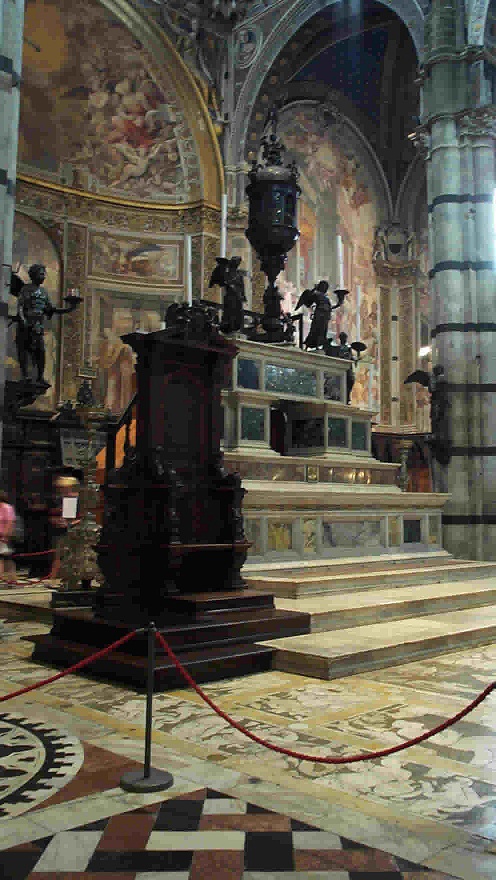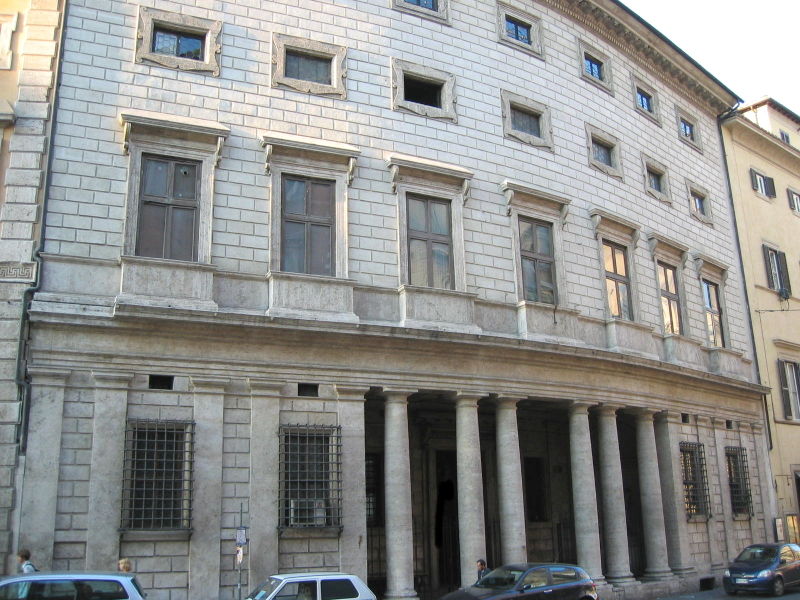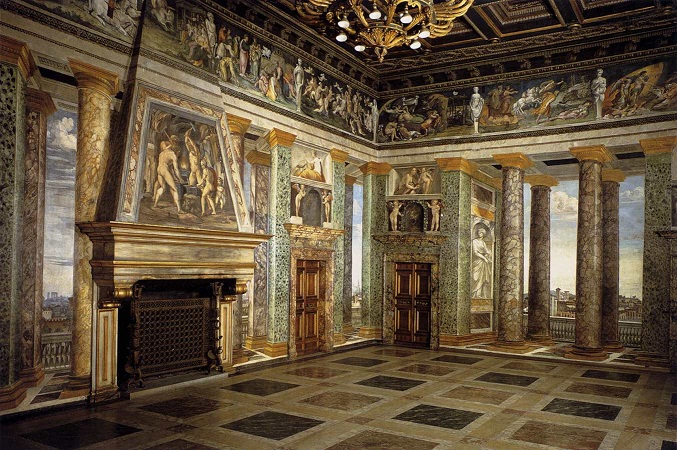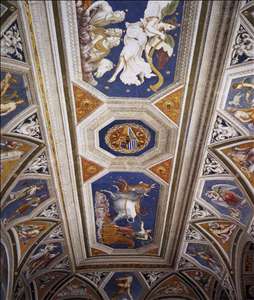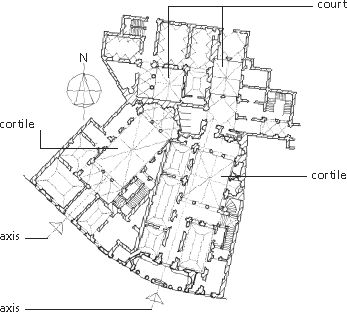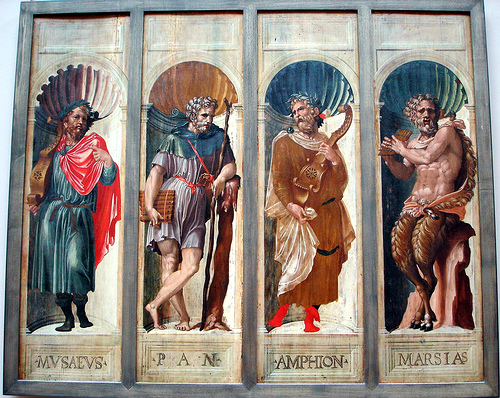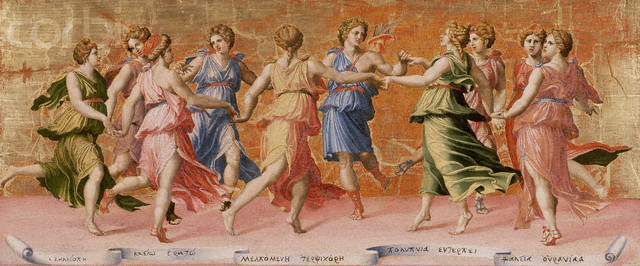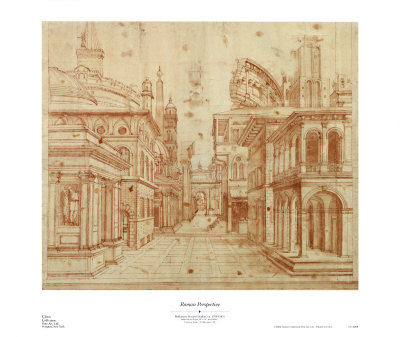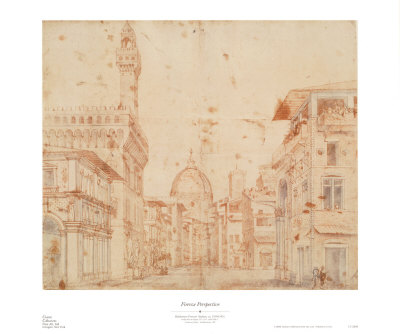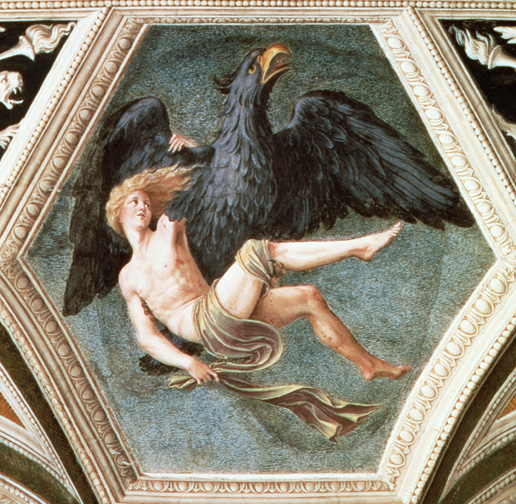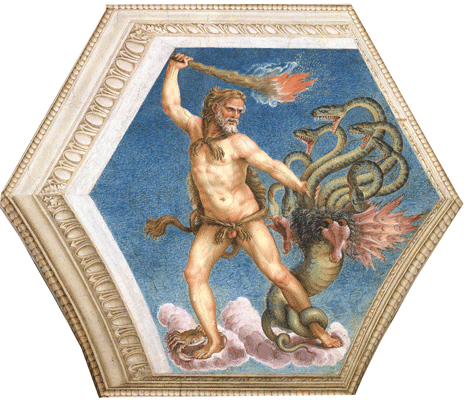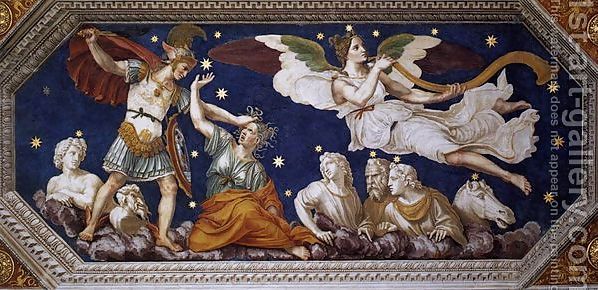<Back to Index>
- Physicist Antoine César Becquerel, 1788
- Architect and Painter Baldassare Tommaso Peruzzi, 1481
- Director of the Reich Main Security Office Reinhard Tristan Eugen Heydrich, 1904
PAGE SPONSOR
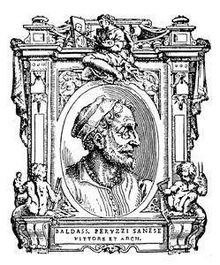
Baldassare Tommaso Peruzzi (7 March 1481 – 6 January 1536) was an Italian architect and painter, born in a small town near Siena and died in Rome. He worked for many years, beginning in 1520, under Bramante, Raphael, and later Sangallo during the erection of the new St. Peter's. He returned to his native Siena after the Sack of Rome (1527) where he was employed as architect to the Republic. For the Sienese he built new fortifications for the city and designed (though did not build) a remarkable dam on the Bruna River near Giuncarico. He seems to have moved back to Rome by 1535.
He was a painter of frescoes in the Cappella San Giovanni in the Duomo of Siena. His son Giovanni Sallustio was also an architect.
Almost all art critics ascribe also to him the design of the originally Villa Chigi, now Villa Farnesina. In this villa, two wings branch off from a central hall with a simple arrangement of pilasters, and a decorative frieze on the exterior of the building.
The frescoed paintings which adorn the interior rooms are for the most
part by Peruzzi. One example is the Sala delle Prospettive, in which
Peruzzi revived the perspective schemers of Melozzo da Forli and
Mantegna, possibly under the influence of both. The walls of the room are
painted so that when one stands toward the left, one has the illusion
that one is standing in an open air terrace, lined by pillars, looking
out over a continuous landscape. The decoration of the façade,
the work of Peruzzi, has almost entirely vanished, but it is documented
in a drawing by an anonymous French artist in the New York Metropolitan
Museum of Art. To decorate this villa on the Tiber many
artists were employed, and just as the style of the villa recalls the old castellated type of country house, so the paintings in
harmony with the pleasure loving spirits of the time were thoroughly
antique and uninspired by Christian ideas. Raphael designed the composition of the story of Amor and Psyche as a continuation of the Galatea. On a plate glass vault Peruzzi painted the firmament, with the zodiacal signs, the planets, and other heavenly bodies. The interior room has a striking use of illusionistic perspective.
The close proximity of Raphael's work has overshadowed Peruzzi's work in the ceiling decoration of the Stanza d'Eliodoro in the Vatican. While Raphael may have designed the general plan for the decoration of the hall, it is certain that the tapestry like frescoes on the ceiling are to be ascribed to Peruzzi. Four scenes represent God's saving omnipotence as shown in the case of Noah, Abraham, Jacob, and Moses. The manifestation of the Lord in the burning bush and the figure of Jehovah commanding Noah to enter the ark were formerly considered works of Raphael.
Peruzzi had produced for the church of S. Croce in Jerusalem a mosaic ceiling, the beautiful keystone of which represented the Saviour. Other paintings ascribed to him are to be found in Sant'Onofrio and San Pietro in Montorio. That Peruzzi improved as time went on is evident in his later works, e.g., the "Madonna with Saints" in S. Maria della Pace at Rome, and the fresco of Augustus and the Tiburtine Sibyl in Fontegiusta at Siena. As our master interested himself in the decorative art also, he exercised a strong influence in this direction, not only by his own decorative paintings but also by furnishing designs for craftsmen of various kinds.
His final architectural masterpiece, the Palazzo Massimo alle Colonne (1535)
located on the modern day Corso Vittorio Emanuele, is well known for
its curving facade, ingenious planning, and architecturally rich
interior.
